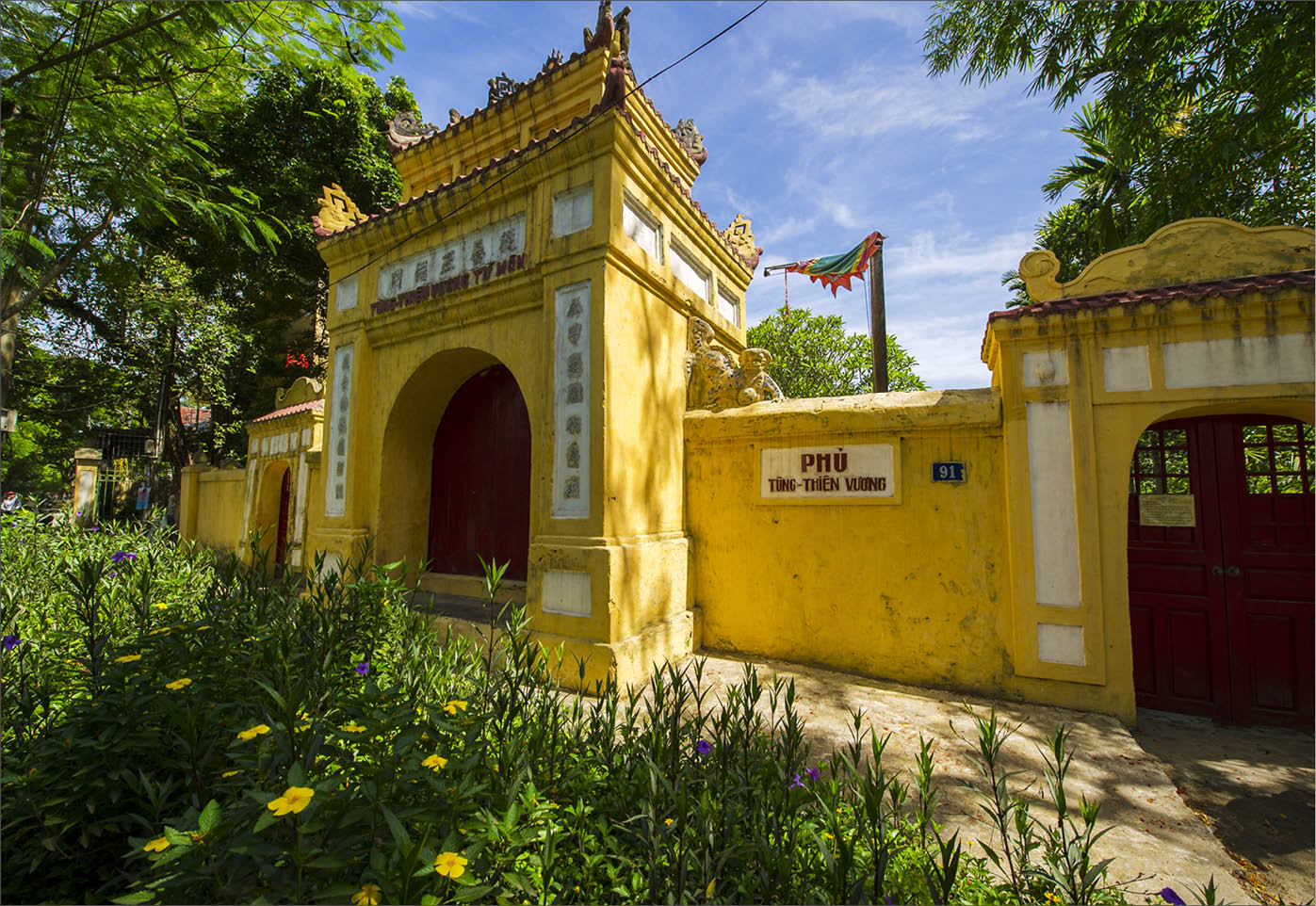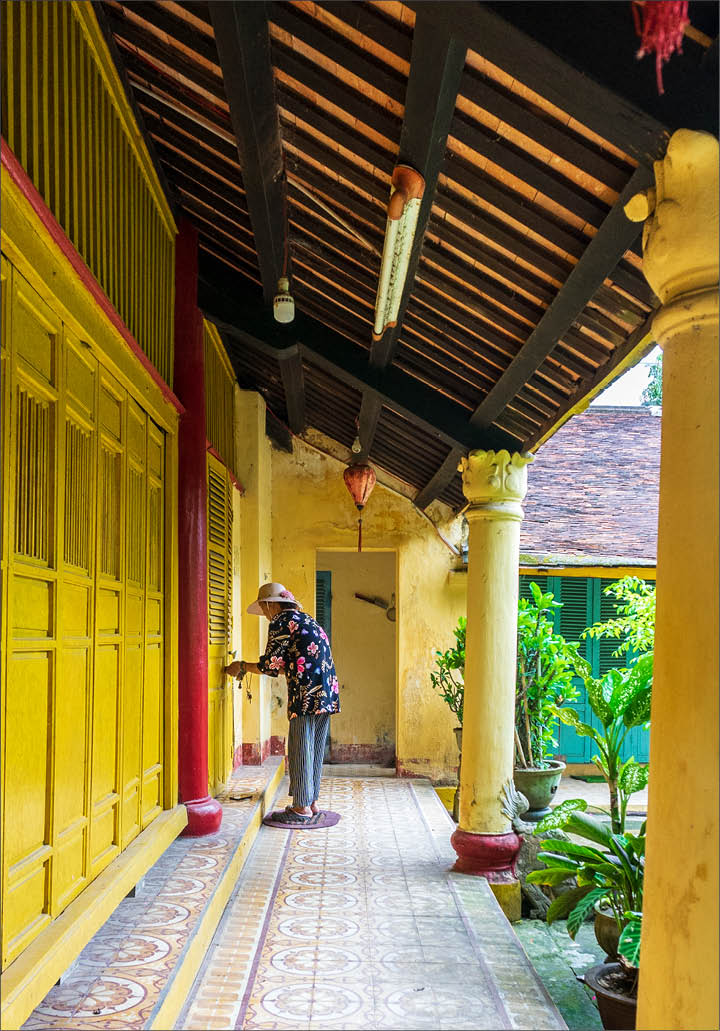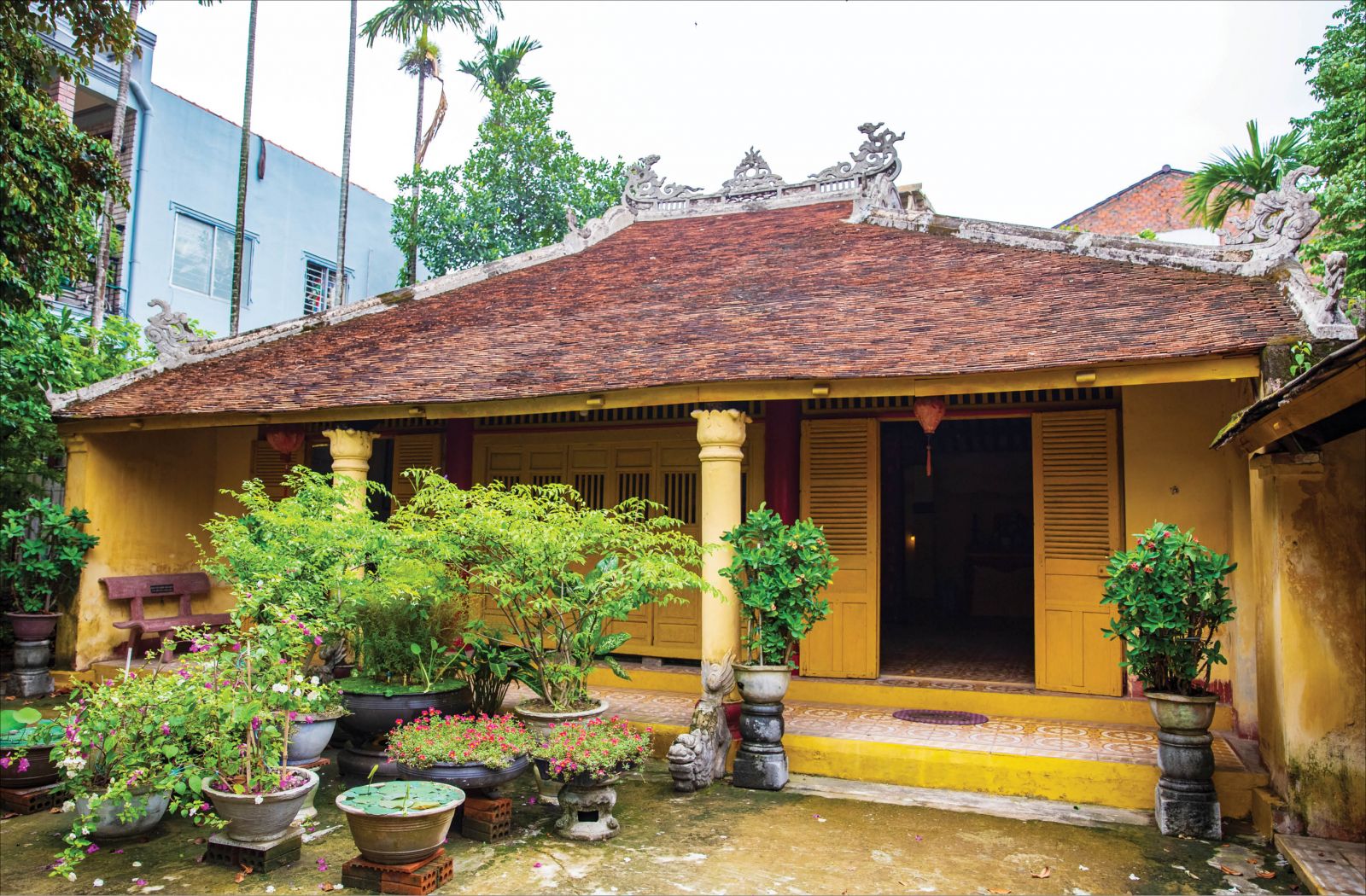
If properly promoted, Phu De will become even more valuable. Photo: Hoang Hai
The good old days
Phu De is the common name for big houses especially built for grown-up princes and princesses who began to move out to live their independent lives. Phu was for princes. It was called “Cong Phu” (Residence of Duke) or “Vuong Phu” (Residence of Grand Duke), depending on the owner’s title granted to him by the King. De is short for “De Trach” and reserved for married princesses. When the owners of Phu De passed away, the main houses in Phu De became the places of worshiping them.
Hue was the imperial capital of the country in the Nguyen Dynasty lasting nearly 150 years with the 13 Kings, not mentioning the time under the reign of the 9 Lords. Hue is therefore the land of Phu De. As recorded, King Minh Mang had 142 children. Suppose each of them had a house, then the number of Phu De was such a large one. Though those houses disperse here and there, in general, there are four typical areas where tourists can visit Phu De in their 1 to 2-day trip. They are An Cuu, Vy Da, Gia Hoi and Kim Long.
In terms of landscape architecture, Phu De in Hue is the transition from folk architecture to royal architecture. Phu De is often placed in a spacious area and has a close connection with nature and especially obeys strictly the principle of feng shui. It is like the imperial city in miniature. There are gates, protecting walls, screen representing Ngu Binh Mountain, water tank representing Perfume River, rock-work with caves and waterfalls, bonsais, flowers and fruit trees, etc. It is also the place where the characters and elegant ways of living of Hue people are preserved.
In terms of architectural structure, each Phu De has a main construction and supplemental constructions. The main construction is often in the center. It was the place of living and now becomes the place of worship of the passed-away owners which is called “tu duong”. Supplemental constructions include kitchens and places for everyday activities, for welcoming friends and for entertainment. Some even have ta vu (left house) and huu vu (right house).
In some Phu De, behind the main house, there is another one called back house for worshiping the owner’s parents. Generally speaking, Phu De in Hue are meticulously carved and originally decorated with royal motifs.

At the moment, there remain only 20 Phu De in Hue that need preserving. Photo: N. Long
Promoting the uniqueness of Phu De
Not until taking a tour around Hue do we understand and feel sorry for what has happened to Phu De. Among about 153 monuments claimed by Thua Thien-Hue People’s Committee according to Decision No 1406/QĐ-UBND dated 8/10/1993, there remain only 20 valuable Phu De (out of hundreds of them as recorded in historical documents), which are in need of being preserved and conserved.
The climate in Hue with a prolonged season of rains and storms has a bad influence on Phu De, causing collapse and water leaking which affect the longevity of the construction.

Nhà rường inside Tung Thien Vuong Residence. Photo: Nam Long
Phu De deserve to be conserved. If properly promoted, they are valuable destinations and tourist attractions. Over the years, with the project “Assisting, Protecting and Promoting the Value of Typical Garden Houses in Hue” the Management and Preservation Board of Hue Garden Houses and Hue Garden House Conservation Fund have repaired many downgraded traditional garden houses including “House of Ngoc Son Princess” at 31 Nguyen Chi Thanh Street.
In the present context, in order to conserve and promote the heritage value of Phu De of the Nguyen Dynasty in Hue, it is necessary to better the governmental management combined with carrying out surveys and determining their history, culture and architecture values. This will serve as jurisdiction for conservation, repair; and promotion of heritage values.
At the same time, it is necessary to raise awareness in the community and to encourage scientific studies and international cooperation. Particularly there must be an effective collaboration among conservation, value promotion and expansion of heritage of Phu De tourism in Hue.
Recently, many provinces and cities in the South and Hoi An Town have reconstructed many old houses for tourist purposes. Obviously, compared with old houses in the South, Phu De in Hue have their own characters that attract many tourists who want to discover and experience them. It is hence a good and active idea to introduce and promote Phu De for tourist purposes, encouraging the conservation and promotion of the heritage of Phu De, which cannot be found anywhere else except in Hue.
| Box: Among about 153 monuments claimed by Thua Thien-Hue People’s Committee according to Decision No 1406/QĐ-UBND dated 8/10/1993, there remain only 20 valuable Phu De (among hundreds of them as recorded in historical documents), which are in need of being preserved and conserved. |
Story: DONG VAN